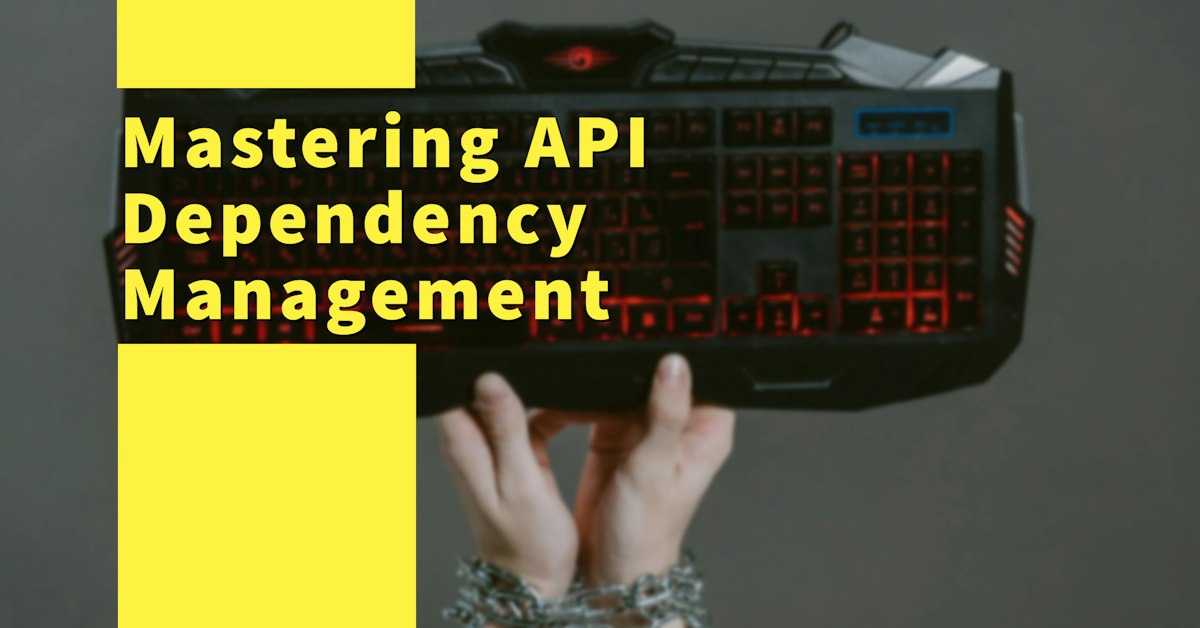In the fast-paced world of software development, managing dependencies is a critical aspect of ensuring smooth and efficient project delivery. APIs (Application Programming Interfaces) play a central role in modern software architecture, connecting different components and services. Effectively managing API dependencies is essential for building robust and scalable applications. In this guide, we’ll explore key strategies and best practices to approach API dependency management.
- 1. Understanding API Dependencies
- 2. Versioning Is Key
- 3. Documentation: Your North Star
- 4. Dependency Tracking Tools
- 5. Implementing Rate Limiting and Error Handling
- 6. Monitoring and Analytics
- 7. Mocking for Simulated Development Environments
- 8. Security Considerations
- 9. Regular Audits and Reviews
- 10. Communication with API Providers
- Conclusion
- References
1. Understanding API Dependencies
Before diving into management strategies, it’s crucial to have a clear understanding of your project’s API dependencies. Identify the APIs your application relies on and document their functionalities. Creating a comprehensive inventory helps in assessing the impact of changes and streamlining the development process.
2. Versioning Is Key
APIs evolve, and maintaining compatibility is essential for a stable software ecosystem. Always use versioning to control changes and updates. Explicitly specify the API version in your project configuration to avoid unexpected disruptions when APIs undergo modifications.
3. Documentation: Your North Star
Thorough documentation is the cornerstone of effective API dependency management. Ensure that both internal and external APIs are well-documented, detailing usage instructions, endpoints, and potential error scenarios. Accessible documentation facilitates seamless integration and reduces the learning curve for developers. [1]
4. Dependency Tracking Tools
Invest in tools that help automate the tracking of API dependencies. Dependency management tools like npm, Maven, or Gradle can assist in keeping your dependencies up-to-date and ensure that your project is always using the latest stable versions.
5. Implementing Rate Limiting and Error Handling
APIs are not infallible, and issues such as rate limits and errors can impact your application’s performance. Implement robust rate-limiting mechanisms to prevent your application from overwhelming APIs, and handle errors gracefully to provide a seamless user experience.
According to this Atlassian article, the best ways to handle rate-limit responses are: [2]
- Utilizing the
Retry-Afterheader - Use a backoff algorithm in the absence of
Retry-After - Disable the retry button
6. Monitoring and Analytics
Proactive monitoring is vital for identifying potential issues before they escalate. Implement analytics tools to track API usage, performance metrics, and error rates. This data-driven approach allows for informed decision-making and timely interventions when necessary.
7. Mocking for Simulated Development Environments
Speed up development cycles by implementing API mocks for testing purposes. Mocking enables developers to simulate API responses, facilitating parallel development and testing without relying on actual API endpoints. This approach improves agility and reduces dependencies during the early stages of development.
8. Security Considerations
Security is non-negotiable when dealing with API dependencies. Implement secure authentication mechanisms, use HTTPS, and encrypt sensitive data. Regularly review and update security protocols to stay ahead of potential vulnerabilities.
9. Regular Audits and Reviews
Periodic audits of your API dependencies are crucial for maintaining a healthy codebase. Conduct code reviews specifically focused on API integrations to identify and address potential issues early on. This practice ensures that your software remains resilient and adaptable to changes in the API landscape.
10. Communication with API Providers
Establish a line of communication with the providers of the APIs you depend on. Stay informed about upcoming changes, deprecations, or service disruptions. Proactive communication with API providers ensures that you are prepared for any modifications that might affect your application.
Conclusion
Effective API dependency management is a continuous journey that requires vigilance, adaptability, and a commitment to staying informed. By understanding your dependencies, leveraging versioning, prioritizing documentation, and implementing robust monitoring and security measures, you can navigate the intricate web of API integrations with confidence. Embrace the evolving nature of APIs, and view each dependency as an opportunity to enhance your application’s functionality. Ultimately, mastering API dependency management is not just a technical skill; it’s a strategic approach that propels your software development efforts to new heights.
References
- [1] Techniques to enhance software quality by PentaTech
- [2] API Rate Limit Handling for Apps by Atlassian




